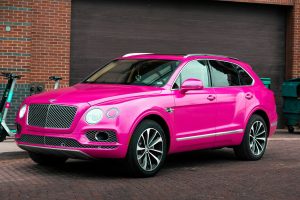High-Tech Headlights for Safer Night Driving
In today’s fast-paced world, driving at night can be a challenging and even dangerous task. The lack of natural light, combined with poor visibility, can increase the risk of accidents and collisions. However, advancements in technology have paved the way for high-tech headlights that are specifically designed to improve night-time driving safety. These innovative headlights have the ability to enhance visibility and provide a safer driving experience for both drivers and pedestrians.
The evolution of headlights
Headlights have come a long way since the first electric headlight was invented in 1893 by the Electric Vehicle Company. Initially, headlights were used to simply light the road ahead, but as cars became more prevalent, headlights also became a crucial part of the vehicle’s safety features. Over the years, the design and technology of headlights have continuously evolved to meet the changing needs of drivers, and high-tech headlights are the latest addition to this evolution.
The importance of high-tech headlights for night driving
According to a report by the National Safety Council, accidents are three times more likely to occur at night compared to during the day. This is primarily due to reduced visibility and fatigue. High-tech headlights help to address both these issues, improving visibility and reducing driver fatigue.
Enhanced visibility
High-tech headlights use advanced technology such as LED or HID bulbs, which produce brighter, whiter light compared to traditional halogen headlights. This results in improved visibility and a wider range of light, enabling drivers to better see the road ahead and any potential hazards. LED and HID headlights also have a longer lifespan, making them a more cost-effective option in the long run.
Reduced driver fatigue
Driving at night can be a tiring and monotonous task, which can lead to driver fatigue. This is especially dangerous as it can impair a driver’s judgment and reaction time. High-tech headlights, such as adaptive headlights, can help reduce fatigue by automatically adjusting the beam of light based on the car’s speed and steering direction. This means drivers do not have to constantly adjust their headlights while driving, allowing them to focus on the road ahead and reducing the risk of accidents.
The different types of high-tech headlights
1. LED headlights
LED headlights are becoming increasingly popular due to their energy efficiency, brighter light output, and longer lifespan. They also produce a more natural light, making it easier on the eyes while driving at night. These headlights are also known for their sleek and modern design, giving cars a more stylish appearance.
2. HID headlights
High-Intensity Discharge (HID) headlights, also known as Xenon headlights, use gas to produce a bright, white light. They are known for their superior brightness and better visibility compared to halogen headlights. However, they do have a shorter lifespan compared to LED headlights.
3. Adaptive headlights
Adaptive headlights use sensors and cameras to adjust the direction and angle of the beam of light, depending on the car’s speed and steering. This allows for maximum visibility and reduces the risk of accidents, especially on curved roads.
Conclusion
High-tech headlights are quickly becoming a must-have feature for modern cars, especially for night-time driving. They not only improve visibility but also reduce driver fatigue, making driving safer for everyone on the road. With advancements in technology, we can expect even more innovations in the future, making night-time driving a less daunting task and reducing the number of accidents on the road.










